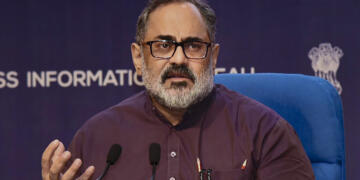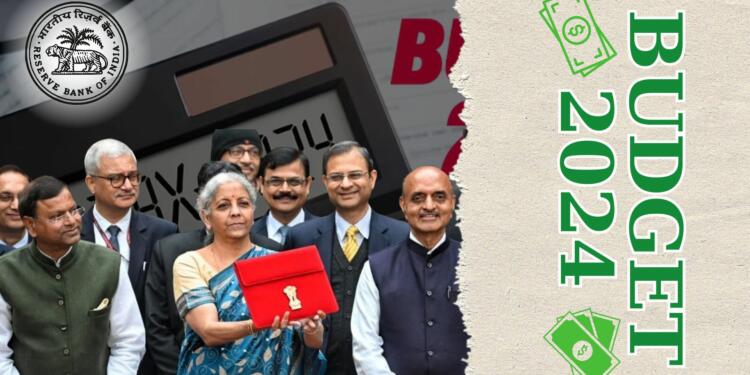India’s interim budget for the fiscal year 2024-25 by Union Finance Minister Nirmala Sitharaman marks a pivotal moment in the nation’s economic trajectory. With a focus on fiscal prudence and targeted social welfare measures, the budget navigates through diverse sectors, from taxation and infrastructure to innovation and clean energy. The key highlights, sector-specific impacts, and stakeholder responses provide an insightful analysis of the economic roadmap outlined in the budget. As India stands at the crossroads of political and economic decisions, understanding the nuances of this budget is paramount for stakeholders across various industries.
Taxation Policies and Fiscal Outlook
No Changes in Tax Rates
The budget maintains the status quo on tax rates for direct and indirect taxes, including import duties. This decision reflects a commitment to providing stability in the fiscal landscape, avoiding disruptions that could impact businesses and investors.
Fiscal Deficit Management
The fiscal deficit for the upcoming fiscal year is estimated at 5.1% of GDP, showcasing a cautious approach towards fiscal consolidation. Financial experts laud this strategy, emphasizing the importance of conservative revenue estimation to ensure long-term economic stability.
Financial Expert Perspectives
Dhawal Dalal, President & CIO of Fixed Income at Edelweiss MF, praises the budget for its pragmatic and growth-oriented approach. The emphasis on conservative revenue estimation is seen as a strategy to under-promise and over-deliver on the fiscal front, contributing to lower borrowing in FY25.
Expanded Social Welfare Schemes
The interim budget expands the scope of social welfare schemes, targeting the poor, women, youth, and farmers. This reflects a commitment to uplift the most vulnerable sections of society and ensure inclusive growth.
Gujarat CM’s Positive Remarks
Gujarat Chief Minister Bhupendra Patel appreciates the inclusion of ASHA and Anganwadi workers in the Ayushman Bharat scheme. He hails the budget as exemplary in promoting the holistic development of society’s four pillars women’s empowerment, youth empowerment, farmers, and the economically underprivileged.
Rural Housing and Solar Rooftop Initiative
The goal of building two crore houses in rural areas and the solar rooftop initiative targeting one crore families are key components of the budget, garnering praise for their potential impact on rural development and sustainable energy practices.
Government’s Focus on Tourism
Industry experts in the tourism sector welcome the government’s initiatives to develop iconic tourist centers and invest in tourism and connectivity infrastructure. Long-term loans to states are seen as crucial for fostering sustainable development and unlocking India’s tourism potential.
Technological Advancements and Connectivity
Chirag Agrawal, Co-Founder of TravClan, emphasizes the importance of investment in technology and connectivity infrastructure for the tourism sector’s growth. Such measures are expected to invite global exploration of India’s heritage while boosting local economies.
Hospitality Sector’s Expectations
Aditya Sanghi, CEO & Co-Founder of Hotelogix, applauds the budget for its commitment to advancing tourism. He highlights the significance of technological advancements in enhancing efficiency and service quality in the hospitality sector.
Also Read: RBI is closing down PayTM Payments Bank
Impact on Indian Start-ups Nurturing Innovation and Growth
Visionary Steps for Start-ups
Start-up leaders express enthusiasm for the budget’s visionary steps, including the allocation of a 1 Lakh Crore fund for long-term, low-interest loans towards deep tech in defense. The extension of tax benefits and continued support through schemes like Fund of Funds, Start-Up India, and Start-Up Credit Guarantee is viewed as a positive signal for the entrepreneurial ecosystem.
Continued Government Support
Ravi Mittal, Founder & CEO of QuackQuack, highlights the government’s commitment to fostering innovation. The extension of tax benefits and support through schemes like Start-Up India exemplifies the dedication to empowering startups.
Strategic Economic Corridor
The India-Middle East-Europe Economic Corridor is deemed a game-changer for the gem and jewellery exporters. The Gem and Jewellery Export Promotion Council (GJEPC) Chairman, Vipul Shah, welcomes bilateral trade agreements to boost exports and seeks increased allocation towards modern infrastructure.
Recommendations for Growth
GJEPC recommends specific measures, including a safe harbor rule for sales of rough diamonds in Special Notified Zones (SNZs), introduction of a Diamond imprest license, and reduction in import duty on cut and polished diamonds. These recommendations aim to enhance the global competitiveness of the industry.
Economic Outlook and Real Estate Balancing
Positive Impact on the Bond Market
Abheek Barua, Chief Economist and EVP at HDFC Bank, sees the fiscal target positively, expecting it to be beneficial for the bond market. The government’s fiscal prudence is reflected in estimates lower than the budgeted fiscal deficit, indicating a commitment to long-term economic health.
Real Estate Sector Dynamics
Sankey Prasad, Chairman & MD at Colliers, emphasizes three pillars for real estate players to note addressing social needs, closing market-specific gaps, and connecting the dots to fuel overall growth. The budget’s focus on urban middle-class support and infrastructure development is expected to drive demand in the real estate sector.
Boosting Green Initiatives
The promotion of rooftop solar systems at the household level and creating charging infrastructure for electric vehicles is viewed as a significant boost towards environmental sustainability. Increased capital outlay for infrastructure development aligns with the government’s commitment to fostering green initiatives.
Clean Energy Initiatives Paving the Way for a Sustainable Future
Nadir Godrej, Chairman and MD of Godrej Industries, welcomes clean energy initiatives like bio-manufacturing and compressed biogas blending. These measures are not only seen as addressing climate concerns but also creating new opportunities in the green sector.
Strategic Allocation for Research and Innovation
The creation of a corpus of Rs 1 lakh crore, coupled with 50-year interest-free loans for research and innovation in sunrise domains, is expected to accelerate India’s transition towards clean energy. Experts anticipate that such initiatives will contribute to building a sustainable and inclusive India.
Political Reactions: Praise and Skepticism
Political reactions are largely in line with expectations, with BJP leaders praising the budget for its growth-oriented approach. Opposition leaders, on the other hand, express skepticism, with Shiromani Akali Dal MP Harsimrat Kaur Badal going so far as to call the budget “hollow.” Congress leaders criticize the budget for lacking substance and a clear roadmap.
Science and Technology Sector: Nurturing Research and Innovation
Pharma Industry
The pharmaceutical industry welcomes the budget’s provisions for research and development. The allocation of funds for creating centers of excellence and promoting research and innovation in the pharma sector is viewed as a strategic move to bolster India’s position in the global pharmaceutical landscape.
Research and Innovation
Dr. Reddy’s Laboratories CEO, Erez Israeli, emphasizes the importance of creating an ecosystem that fosters research and innovation in the pharmaceutical sector. The budget’s focus on supporting high-quality research is expected to enhance India’s competitiveness in the pharmaceutical domain.
Recognition of Digitalization Emphasis
Stakeholders across sectors recognize the budget’s emphasis on digitalization, innovation, and technology-driven advancements. The infusion of technology across sectors is expected to drive efficiency, transparency, and accountability.
Transformative Technologies in Education
Education sector experts anticipate government support for transformative technologies like augmented and virtual reality. Integrating such technologies into the education sector is seen as crucial for preparing the workforce for the demands of the future.
Conclusion
The interim Union Budget for 2024-25 strikes a delicate balance between continuity and progress, with a pronounced focus on key sectors such as social welfare, infrastructure, and innovation. While stakeholders across various industries have welcomed specific provisions, political reactions remain polarized. As the fiscal year unfolds, the true impact of the budget on India’s economic trajectory and development goals will become clearer. The government’s commitment to fiscal prudence, coupled with strategic investments in key sectors, sets the stage for a resilient and forward-looking Indian economy.






























